#Ryo Ikebe
Text




Pale Flower (1964)
153 notes
·
View notes
Text
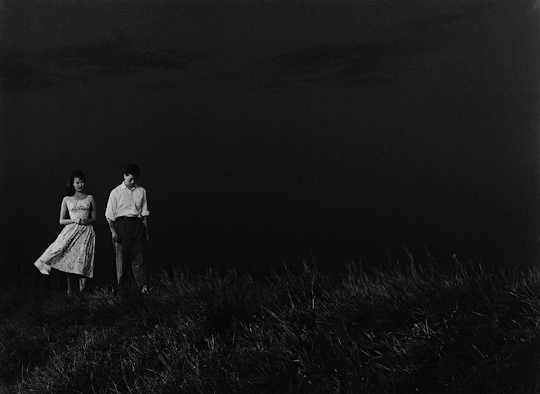
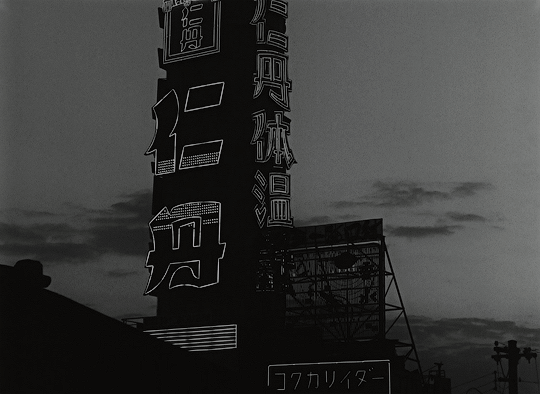




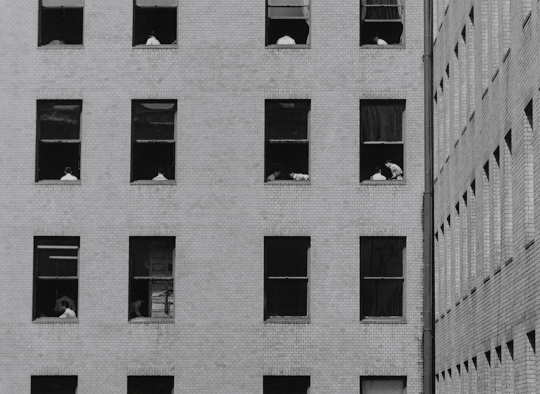
Early Spring (1956) dir. Yasujiro Ozu
#classicfilmsource#classicfilmcentral#classicfilmblr#filmgifs#userbbelcher#vietlad#userjonah#gifs#userdeforest#useralex#uservienna#uservintage#early spring#Chikage Awashima#Keiko Kishi#Ryo Ikebe
13 notes
·
View notes
Text
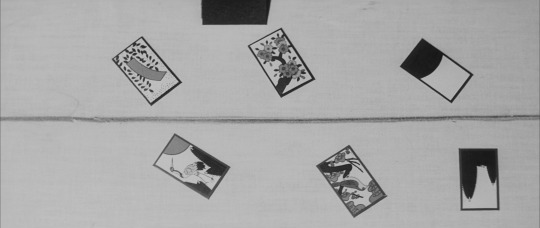



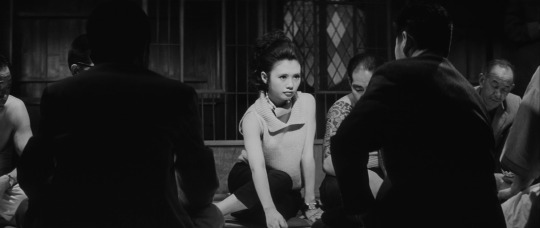






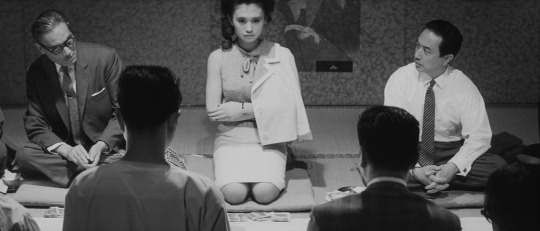

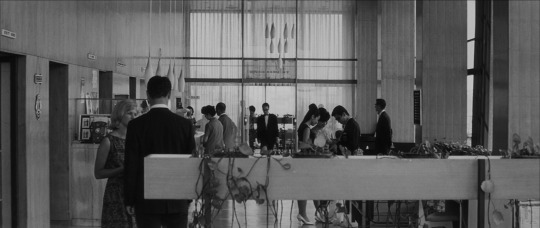
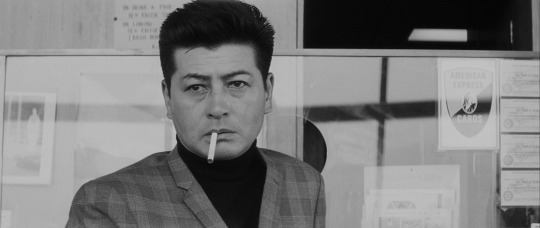



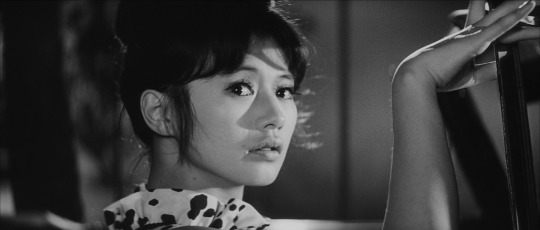

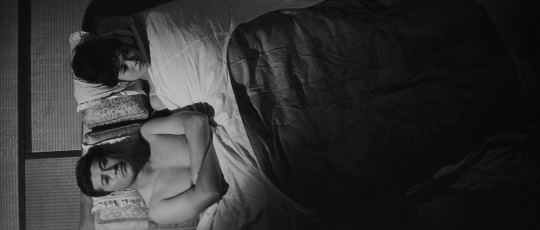









Pale Flower / Kawaita hana (1964)
Director: Masahiro Shinoda
Cinematographer: Masao Kosugi
Starring: Ryō Ikebe, Mariko Kaga, Isao Sasaki, Takashi Fujiki, and Chisako Hara
#pale flower#mariko kaga#Kawaita hana#1964#japanese cinema#classic cinema#60s cinema#60s film#film noir#cult cinema#cult films#masahiro shinoda#japanese film#japanese movies#60s fashion#60s movies#ryo ikebe#yakuza#yakuza movies#crime film#crime movies#cinematography#classic film#mod#costume design
4 notes
·
View notes
Photo

Ryo Ikebe and Keiko Kishi in Early Spring (Yasujiro Ozu, 1958)
Cast: Chikage Iwashima, Ryo Ikebe, Teiji Takahashi, Keiko Kishi, Chishu Ryu, So Yamamura, Takako Fujima, Masami Taura, Haruko Sugimura, Kumeko Urabe, Kuniko Miyake, Eijiro Tono. Screenplay: Kogo Noda, Yasujiro Ozu. Cinematography: Yuharu Atsuta. Production design: Tatsuo Hamada. Film editing: Yoshiyasu Hamamura. Music: Takanobu Saito.
Early Spring is a film pregnant with significant themes: the dreariness of corporate office work, the nostalgia for wartime adventure and camaraderie, the tension between tradition and modernization, but none them are allowed to overwhelm the simple human story it tells. Shoji Sugiyama (Ryo Ikebe), a "salaryman" for a fire-brick manufacturing company, and his wife, Masako (Chikage Awashima), are have grown apart after the death of a child: He throws himself into his work, into concern over the illness of a friend, into after-hours drinking with old war buddies, and finally into a brief affair with a young woman (Keiko Kishi) he has met on the commuter train. She's called "Goldfish" because of her large eyes, and she's a rather giddy and flirtatious woman who likes to pal around with the guys. After Shoji and Goldfish are seen together on a weekend hike put together by some of their co-workers -- Masako, who is reserved and rather traditional in manner, declined to accompany him -- gossip begins to spread. Eventually it comes back to Masako, and after several incidents -- he spends the night with Goldfish and claims he was with his sick friend, he forgets to observe the anniversary of the death of their son, and he brings home two very drunk war buddies -- she leaves him. Meanwhile, Shoji has been offered a transfer to a manufacturing branch of his company in a distant city where he will have to spend three years in the hope that he can return to Tokyo and a promotion. He accepts the offer, and at the end Masako joins him, thinking they can work things out. At the conclusion they watch a train go by and reflect that Tokyo -- as symbolic for them as Moscow is for Chekhov's three sisters -- is only three hours away. Characteristically, Ozu and co-screenwriter Kogo Noda tell this story in a strictly linear fashion. Another director might have been tempted to insert expository flashbacks to, for example, the death of the child. But by letting the story play out as it happens -- beginning with a "typical" day in the life of the Sugiyamas -- Ozu builds a special kind of intimacy with his characters, as we gather the clues to their behavior and sometimes their relationships along the way. This intimacy is reinforced by Ozu's signature low-angle camera, in which we build our acquaintance with the characters from the ground up, as it were.
1 note
·
View note
Text
Battle In Outer Space | Episode 386
New Post has been published on https://esonetwork.com/battle-in-outer-space/
Battle In Outer Space | Episode 386

Mark Maddox joins Jim for a rousing discussion of the 1959 Inoshiro Honda Sci-Fi Classic “Battle In Outer Space,” starring Ryo Ikebe, Kyoko Kenzai, Minoru Takada, Koreva Senda, Len Stanford, Harold Conway, and Hisaya Ito. Aliens establish a base on the Moon and attack the Earth. All he countries band together to stand tall against the threat. Find out more on this episode of MONSTER ATTACK!, The Podcast Dedicated To Old Monster Movies.
#159 Japanese Sci-Fi#Battla In Outer Space#geek podcast#Harold Conway#Hisaya Ito#Inoshiro Honda#Jim Adams#Koreva Senda#Kyoko Kenzai#Len Stanford#Mark Maddox#Minoru Takada#Monster Attack!#nerd podcast#Ryo Ikebe#The ESO Network
0 notes
Photo



乾いた花 / Pale Flower (1964) dir. Masahiro Shinoda
#noirvember#mifunebooty#usergina#usersrina#ritahayworrth#useralex#bergmaningrid#userksusha#乾いた花#Pale Flower#Mariko Kaga#Ryo Ikebe#1960s#romance#thriller#ours#by michi
4K notes
·
View notes
Text
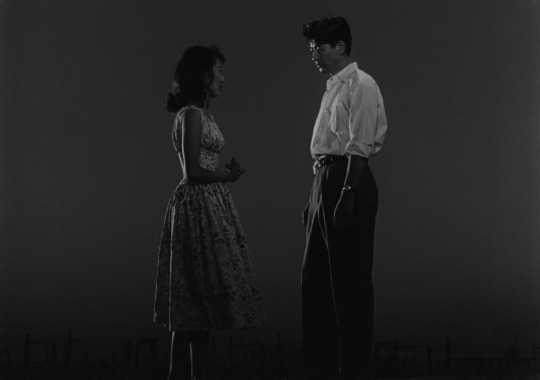


EARLY SPRING 早春 | OZU YASUJIRO 1956
#early spring#soshun#ozu yasujiro#yasujiro ozu#keiko kishi#ryo ikebe#kishi keiko#ikebe ryo#my stuff#**
39 notes
·
View notes
Photo
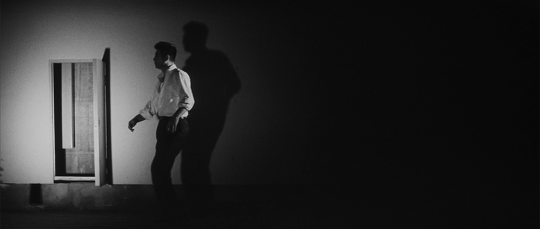
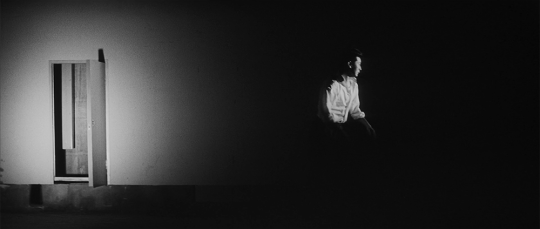
“Pale Flower” (1964) by Masahiro Shinoda.
篠田 正浩「乾いた花」
12 notes
·
View notes
Text

Happy 78th, Mariko Kaga.
With Ryo Ikebe and Takashi Fujiki in a publicity photo for Masahiro Shinoda’s Pale Flower (1964).
14 notes
·
View notes
Audio
We travel back in time to watch KYUKETSU-GA (1956) from Japanese director Nobuo Nakagawa! Moths? Vampires?! Werewolves?!! Just what is in store in this adaptation of Seishi Yokomizo's Kosuke Kindaichi detective stories?
The film stars Ryō Ikebe as the detective Kindaichi, with Asami Kuji, Eijirō Tōno and Kyoko Anzai in supporting roles.
Context setting 00:00; Synopsis 18:28; Discussion 33:58; Ranking 40:11
#podcast#vampire moth#kyuketsu-ga#japanese horror#nobuo nakagawa#seishi yokomizo#kosuke kindaichi#hideo oguni#ryo ikebe#asami kuji#eijiro tono#kyoko anzai#jun yasamoto#masaru sato#toho#horror
6 notes
·
View notes
Photo
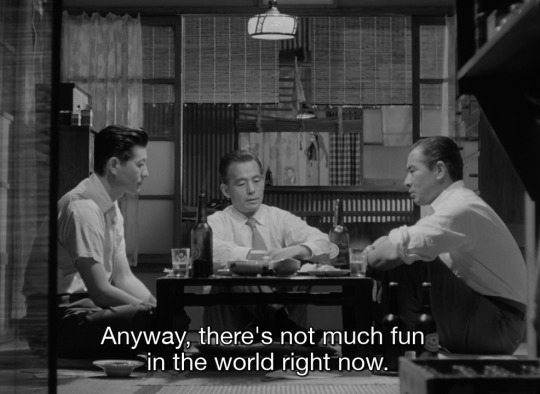

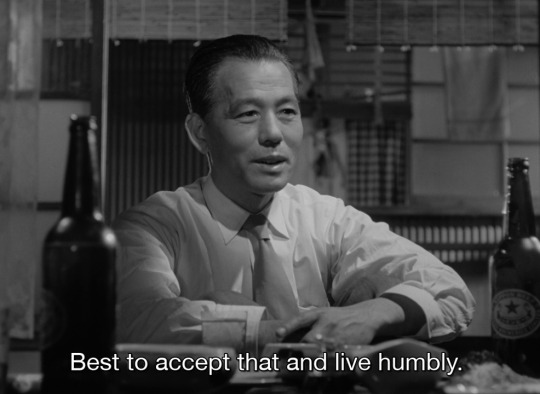
EARLY SPRING ‘早春, Sōshun’ (1956) dir. Yasujirō Ozu
#early spring#1956#早春#sōshun#yasujirō ozu#yasujiro ozu#chishu ryu#so yamamura#ryo ikebe#film stills#screencaps#the criterion collection#criterion#life#acceptance
63 notes
·
View notes
Photo

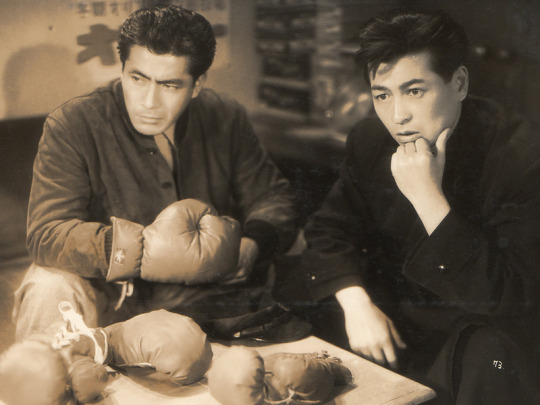
Promotional stills for Who Knows a Woman's Heart (Kajirō Yamamoto, 1951) with Toshiro Mifune, Kyoko Kagawa, and Ryo Ikebe
Kajirō is noted as a mentor to Akira Kurosawa
98 notes
·
View notes
Photo

Ryo Ikebe in Apostasy (Keisuke Kinoshita, 1948)
Cast: Ryo Ikebe, Yoko Katsuragi, Osamu Takizawa, Jukichi Uno, Eitaro Ozawa, Sachiko Murase, Kenji Susukida, Ichiro Sugai, Akira Yamauchi. Screenplay: Eijiro Hisaita, based on a novel by Toson Shimazaki. Cinematography: Hiroshi Kusuda. Art direction: Isamu Motoki. Film editing: Hisashi Sagara. Music: Chuji Kinoshita.
The title of Keisuke Kinoshita's film Apostasy is generally acknowledged to be a mistranslation of the original, Hakai, which has a variety of meanings, including "destruction." The film is not about someone abandoning his religion, which is what the English "apostasy" means, but instead it's about the discrimination against Japan's feudal pariah class, the burakumin, literally, "people who live in villages." Which is again misleading if we think of villages as small communities of farmers, artisans, and merchants, all of whom had acceptable roles in feudal society. The burakumin were considered untouchable because their work associated them with death: butchers, tanners, undertakers, executioners, and so on, who, unable to associate with the "respectable" classes, formed communities and villages of their own. The taint of their work extended to their children's children -- even to those who managed to improve themselves with education and work in other fields, like the protagonist of Kinoshita's film, Segawa (Ryo Ikebe), who loses his job as a schoolteacher because he has hidden the fact that he's a "villager," as the English subtitles call him. His secret is exposed when he goes home to his village, remote in the mountains near Nagano, for his father's death. The action of the film takes place in 1901, well after American influence had caused the Japanese government to lift the legal restrictions placed on the burakumin, though without erasing the deep-seated prejudice against them. But Kinoshita has a more contemporary purpose for his film: After World War II, Japan was adopting a new, and of course again heavily American-influenced, constitution, guaranteeing civil rights to all Japanese citizens. So Apostasy is a heavily didactic film about tolerance -- not unlike some of the preachier American films that promoted better race relations in the aftermath of the war. Its bigots are despicable and its heroes -- including a descendant of the burakumin who has become a lawyer and a crusader for equality -- are noble. There's a love threatened by prejudice that triumphs, and a tear-filled ending in which the children Segawa has taught come out to wave goodbye as he departs the town that scorned him. In short, it's Kinoshita at his most sentimental.
1 note
·
View note
Photo
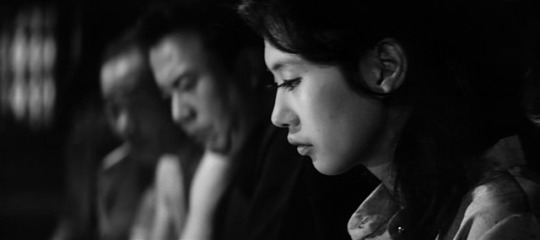


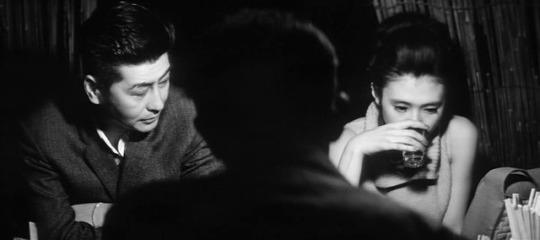


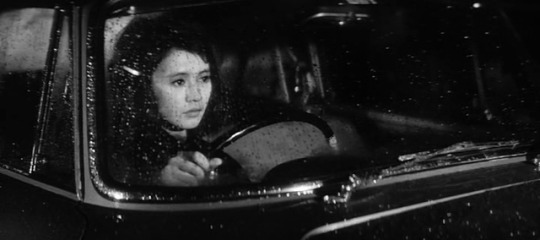
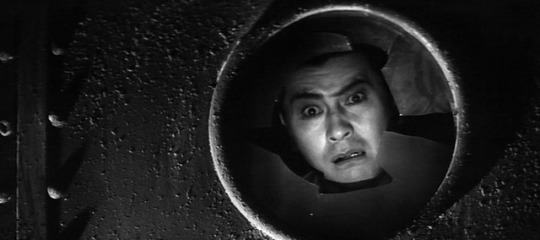

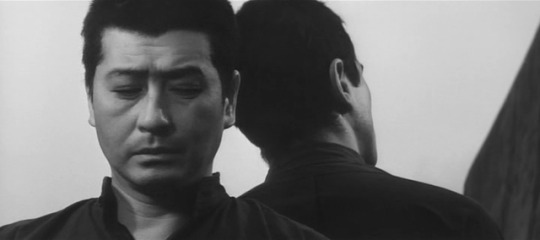
Pale Flower (Masahiro Shinoda, 1964)
#pale flower#film noir#black and white#kawaita hana#masahiro shinoda#shinoda#1964#Mariko Kaga#Ryô Ikebe#ryo ikebe#cars#back#smoke#drink#alcohol
251 notes
·
View notes
Text
Pale Flower (乾いた花、1964)

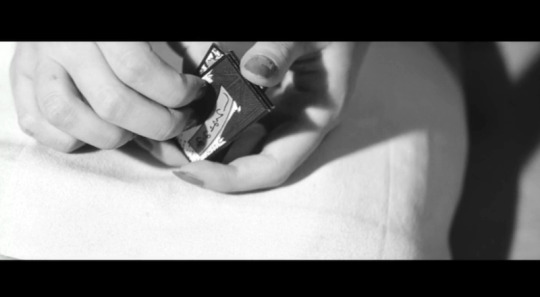
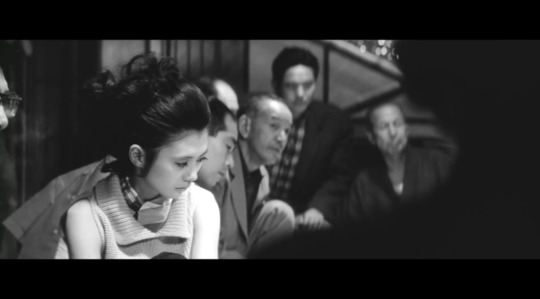

篠田正浩が監督した「乾いた花」はフィルムノーワルっぽくて精神的な人間ドラマです。加賀まりこの美しさが輝いています。Pale Flower is a film noirish psychological drama by new wave director Masahiro Shinoda, and part of the Criterion Collection. You can read my review here: https://intotheretroscope.com/pale-flower-japan-1964-shinoda/
#1960s films#new wave#mariko kaga#ryo ikebe#加賀まりこ##池部良 #篠田正浩#masahiro shinoda#film noir#black and white#yakuza
5 notes
·
View notes
Text
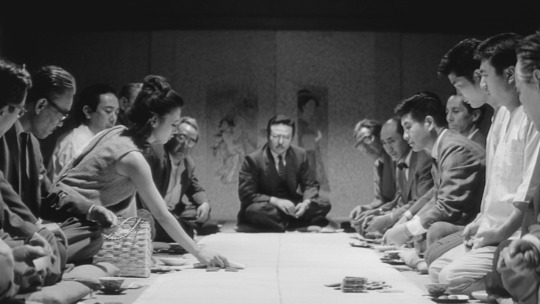
Pale Flower
1 note
·
View note